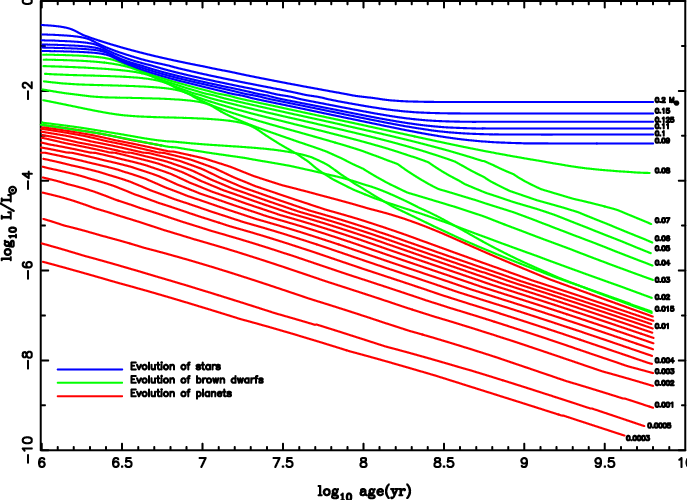I've read that when a body reaches about 13 times the mass of Jupiter that deuterium fusion starts and the body becomes a brown dwarf instead of a planet.
I have a multiple question.
Are there any other factors besides mass and possibly metal abundance (composition) that would determine this "turn on" point ?
If the "brown dwarf" was detected indirectly and no spectroscopic information was available, could we assume that metalicity would be the same as the larger star ?
Would a higher metallicity body "turn on" at a lower mass? (Would a difference between [Fe/H] = -0.19 and [Fe/H] = +0.07 make much of a difference in "turn on mass"?)
*I did miss the related question when I posted this one, but I do have a question here that wasn't answered. It was about how stellar metallicity effects the onset of fusion. I think it may be as simple as whether or not adding "metals" makes the core hotter or colder for a given mass. I also wanted to know if I could assume that both "stars" in a binary system should have the same metallicity.
*Now that I've read Rob's excellent (as usual) answer, I would be curious as to how long deuterium fusion lasts in brown dwarfs from 13 to 80 Jupiter masses and what happens (in models) when it stops.
